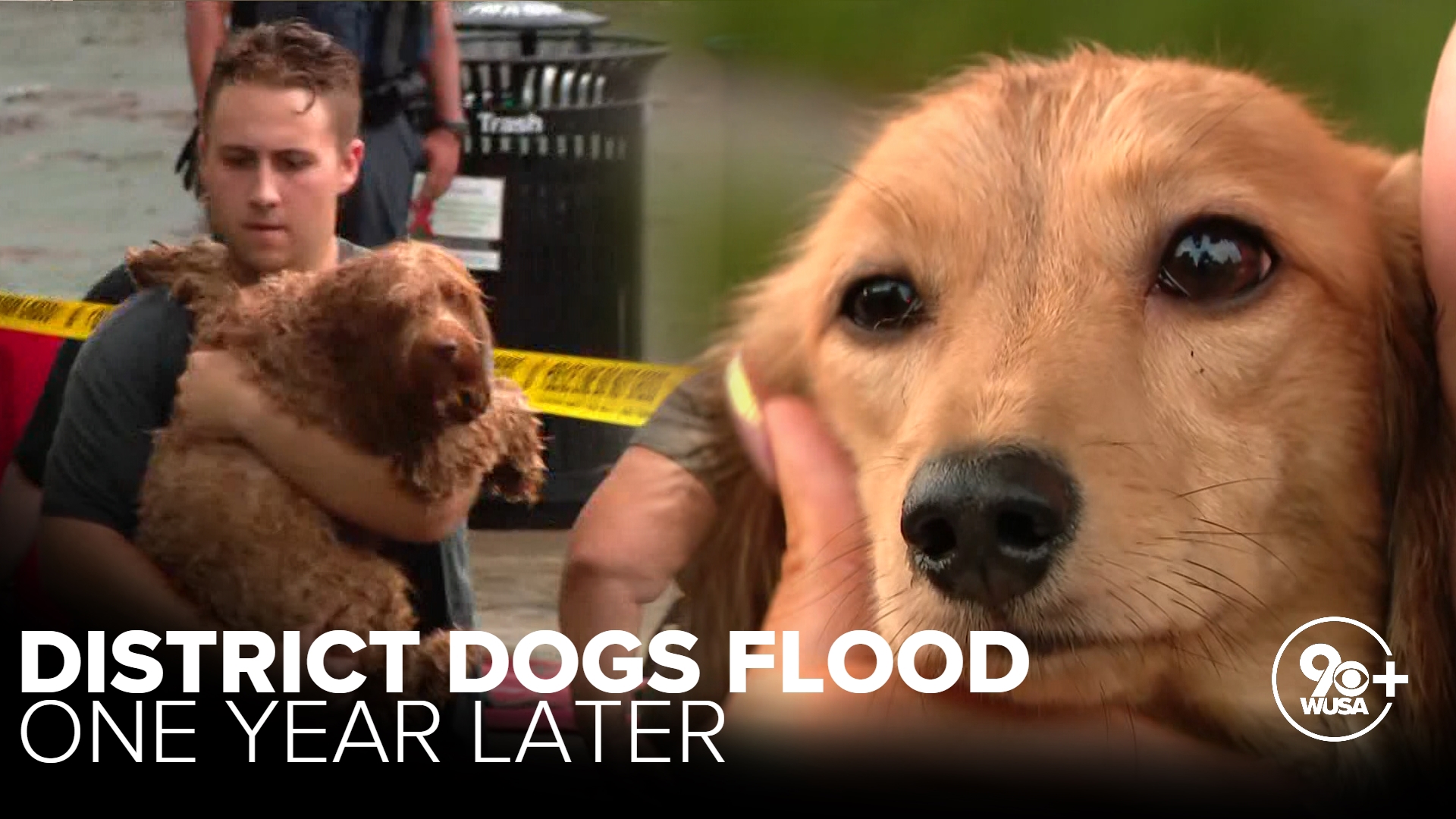WASHINGTON — Emergency response to the tragedy that occurred at District Dogs has been under a microscope even a year later. In addition to the delayed response from dispatchers, there was another element that we really wanted to focus on. The question is whether our infrastructure is prepared for a changing climate.
WUSA9 looked into the efforts the District has made to reduce the risk of flooding. Flash flooding in the District and throughout the region is amplified by climate change. The flooding at District Dogs, which left 10 dogs dead, is a pretty good example of the amount of rain that came down and the fact that the drainage system under the street couldn't handle it.
Six weeks after the tragedy, new drains went into service. The drains are connected to the biggest underground infrastructure project in D.C. since the metro was built. Since it's underground, not a lot of people know about it.
It's called the Northeast Boundary Tunnel. It was constructed to capture stormwater and sewage surges during big storms to prevent them from spilling into the Anacostia River. But there is a side benefit, which is that these drains were engineered with some additional capacity.
This project was primarily a pollution control project, but there are some stormwater benefits that go into that project. We talked with John Lyle of DC Water and he explained this incredible tunnel project underground.
"The primary purpose of those tunnels is for pollution control to capture combined sewer overflows and prevent them from going into the rivers," Lyle said. "But a secondary purpose of the northeast boundary tunnel is to also help mitigate flooding in that tunnel. The northeast boundary tunnel that is now in operation is capable of storing 90 million gallons of additional combined sewage, in addition to the 100 million gallons that's already in operation."
Lyle continued, "So that is just the added capacity of the tunnel system which helps with mitigating the flooding. When the sewer system fills up and is not able to take any more stormwater off of the streets. Then that's when you start to see backups and some localized flooding. And so we are confident that the tunnel system is going to help mitigate that issue. It's going to reduce the risk of flooding. It will not entirely eliminate it because it's really impossible to spend your way out of that problem altogether."
The improvements that have been made in the District are, by no means, a guarantee that it's not going to flood again at some point, under some conditions, on Rhode Island Avenue where District Dogs was once located. It's flooded many times in the past, but it does appear that this underground tunnel, which is 5.1 miles long, has had some effect broadly.
Since it went into service, the tunnel has captured more than 90% of the raw sewage that would have spilled into the Anacostia River. In that time, it's captured a lot of nasty stormwater, a lot of litter, and a lot of raw sewage.

